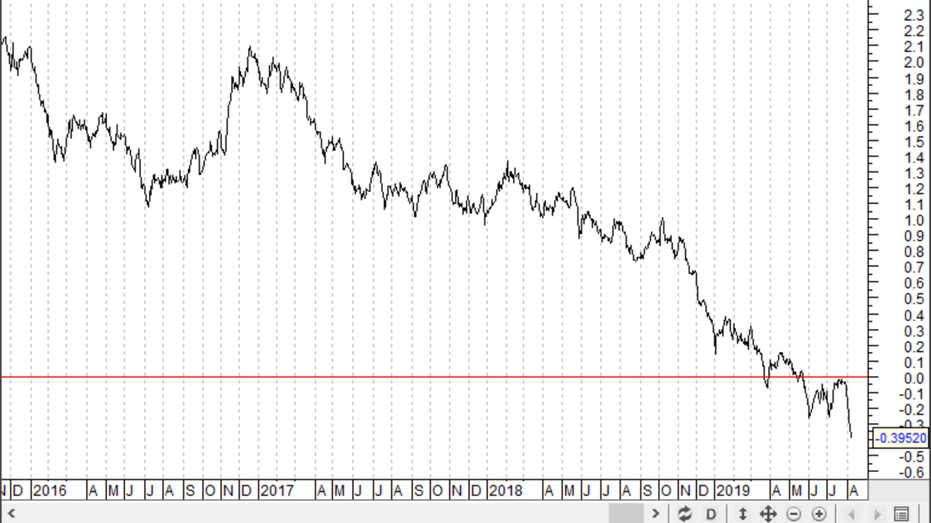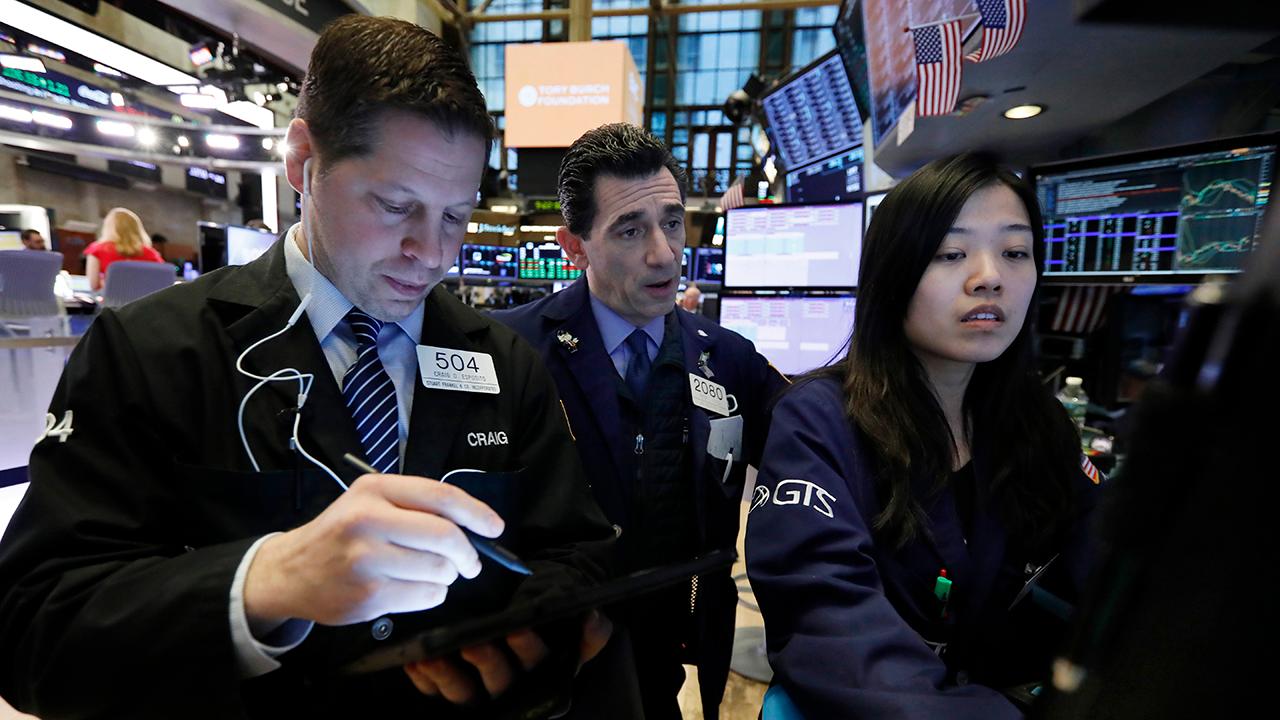Is the bond market doing the Fed's work?
President Trump continues to publicly push the Federal Reserve to cut interest rates further, calling the central bank “our biggest problem” instead of China. But the bond market may already be doing some of the Fed’s work for it.
The yield on the 10-year Treasury, which ripples through to influence many interest rates in the economy from mortgages to credit cards, sunk to its lowest level Wednesday in nearly three years to 1.6% and change.
“With the Fed signaling they will continue to monitor the trade situation and possibly ease, longer-term interest rates have fallen to near three-year lows driving down interest rates on mortgages and auto loans and improving consumers overall balance sheets,” says Wil Stith, bond fund manager at Wilmington Trust.
The interest rates consumers pay for mortgages and other big-ticket items like car loans that are financed are likely to drop. But some are skeptical it will help consumers all that much.
“Millions of Americans would benefit by refinancing their mortgages,” says Bankrate senior economic analyst, Mark Hamrick. “But other issues loom larger, such as the consistent rise in recent years in home prices and the lack of more substantial and consistent wage gains. Similarly, for the U.S. economy in general, falling rates don’t compensate for the whirlpool of uncertainty confronting business leaders in the U.S. and abroad.”
The yield on the 10-year Treasury has been steadily dropping this year and was still trading around 2% and change at the end of July before taking a nosedive in recent days as trade tensions between the U.S. and China escalated.
Investors have been gobbling up U.S. Treasuries as they seek safe investments amidst escalating trade tensions and expectations that will cause global economic growth to slow further. Bond-fund manager Stith says so long as global investors are seeking safety and higher yields in the U.S. relative to negative-yielding government bonds in Europe that could continue to put downward pressure on U.S. bond yields. “The dramatic fall in yields is telling you that the risk of a recessionary environment has risen over the last week,” says Stith.
10-Yr/3-Month Treasury Yield Curve Widest Since March 2007

The difference between the yield on the ten-year Treasury and the two-year Treasury—the yield curve-- has not inverted but narrowed to ten basis points – the narrowest of the spreads we’ve seen in recent months. Stith says if China were to weaken its currency that could push the yield curve into inversion—the typical harbinger for a looming recession. The yield spread between the 10-year Treasury note and the 3-month Treasury bill is the widest inversion since March 2007.
President Trump wants the Federal Reserve to cut interest rates to juice the economy by devaluing the dollar. "President Trump’s trade escalation is forcing the Fed to react to the drag on global growth by cutting rates,” says Andrew Busch, former currency trader, and former chief market intelligence officer for the Commodities Future and Trading Commission. “This is exactly what President Trump wants and he will likely continue to manipulate the trade negotiations to get lower rates. To him, this is a win-win situation. What he doesn’t understand is that it will a negative impact on US growth and risks a dramatic drop in stocks as business and consumer confidence is shaken."
CLICK HERE TO GET THE FOX BUSINESS APP
Busch says right now there’s a race to the bottom between countries to push the value of their currencies lower. “Every time the U.S. cuts rates it incurs global interest rates at lower levels and forces other countries to cut rates.”




















